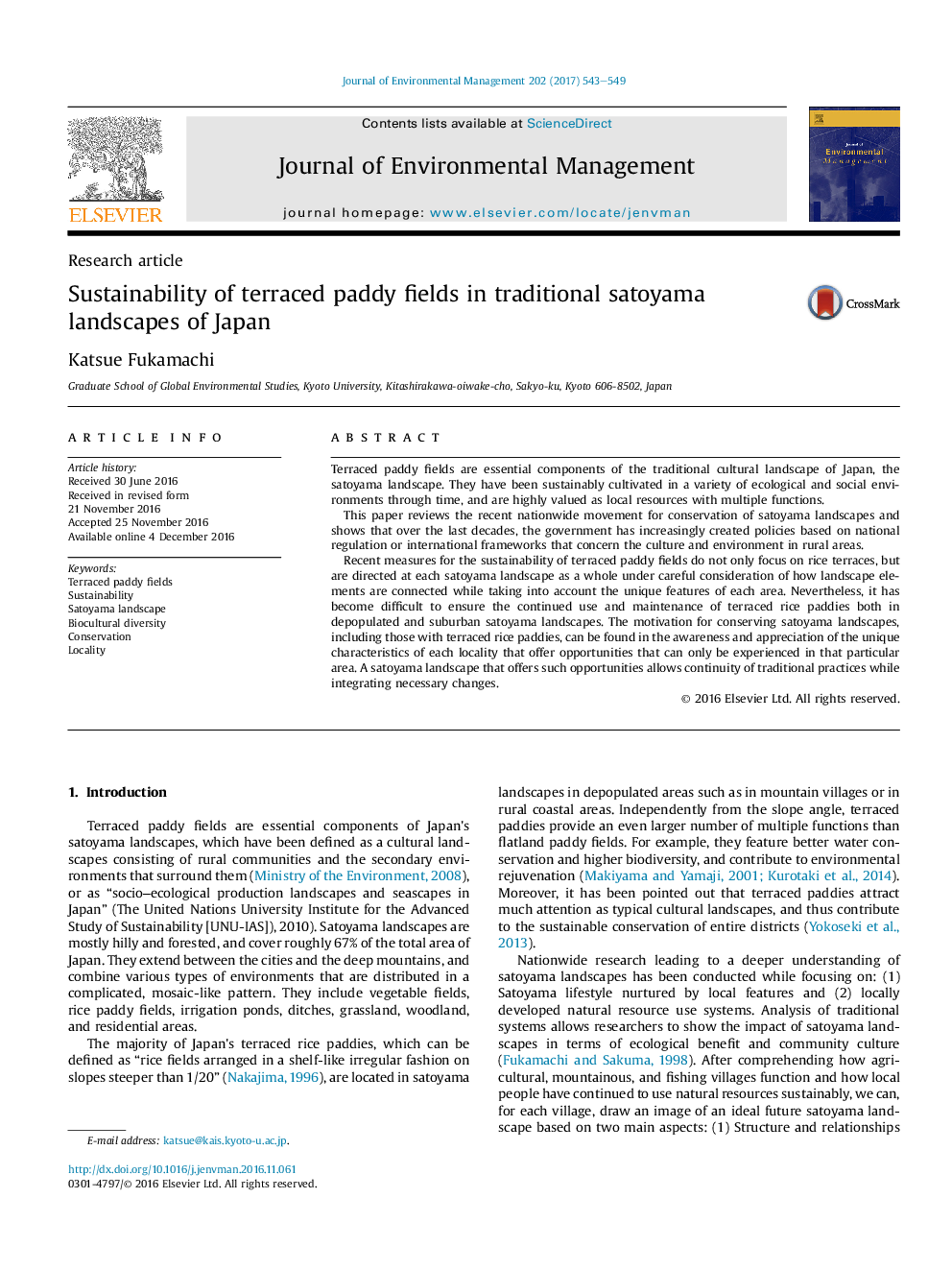| Article ID | Journal | Published Year | Pages | File Type |
|---|---|---|---|---|
| 5116872 | Journal of Environmental Management | 2017 | 7 Pages |
â¢Recent nationwide movement for conservation of satoyama landscapes is reviewed.â¢Importance of biocultural diversity of terraced paddy fields is proposed.â¢Movement for sustainable terraced paddy fields is clarified.
Terraced paddy fields are essential components of the traditional cultural landscape of Japan, the satoyama landscape. They have been sustainably cultivated in a variety of ecological and social environments through time, and are highly valued as local resources with multiple functions.This paper reviews the recent nationwide movement for conservation of satoyama landscapes and shows that over the last decades, the government has increasingly created policies based on national regulation or international frameworks that concern the culture and environment in rural areas.Recent measures for the sustainability of terraced paddy fields do not only focus on rice terraces, but are directed at each satoyama landscape as a whole under careful consideration of how landscape elements are connected while taking into account the unique features of each area. Nevertheless, it has become difficult to ensure the continued use and maintenance of terraced rice paddies both in depopulated and suburban satoyama landscapes. The motivation for conserving satoyama landscapes, including those with terraced rice paddies, can be found in the awareness and appreciation of the unique characteristics of each locality that offer opportunities that can only be experienced in that particular area. A satoyama landscape that offers such opportunities allows continuity of traditional practices while integrating necessary changes.
